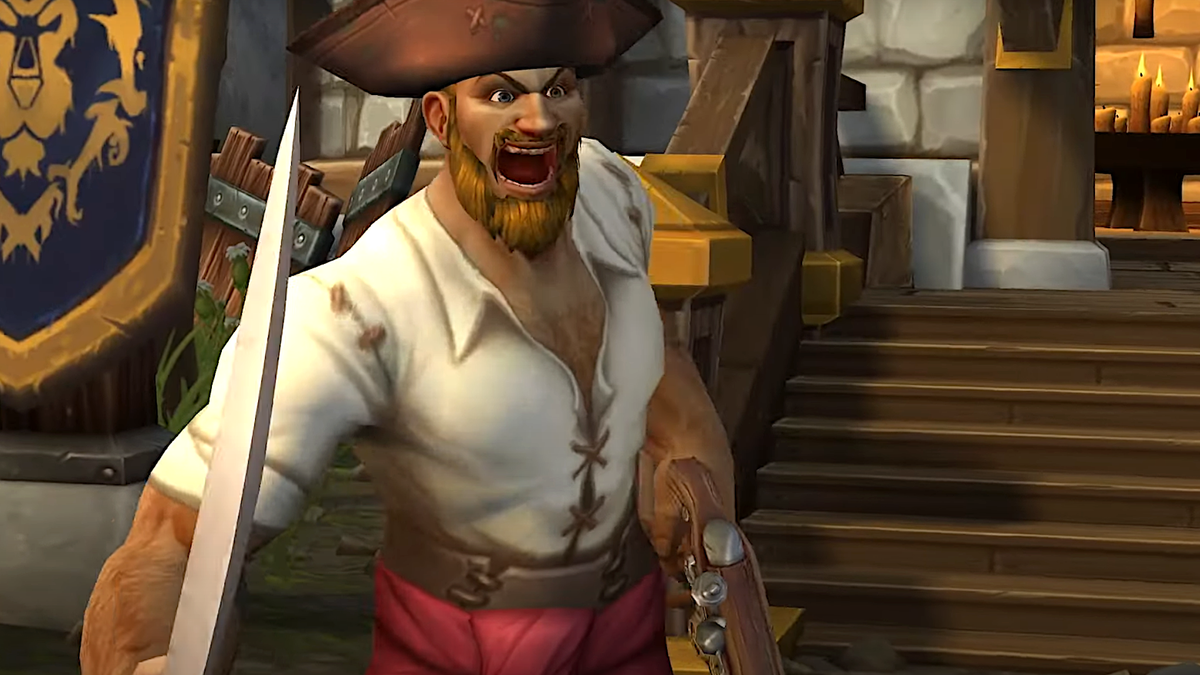The Dreamcast burned brightly from 1998 to 2001 but Sega's financial situation famously ended its life early. As a result, many games - both announced and unannounced - were abruptly cancelled and as new games arrived on other platforms, many often wondered, would these titles have been possible on Dreamcast? Well, with an unofficial homebrew release of Grand Theft Auto 3 on the classic Sega machine, we finally have an answer for at least one of those questions.
GTA 3 itself really needs no introduction - it was a cultural event, after all, but before GTA 3 took the world by storm, the development team at DMA Design, creator of Lemmings, had released multiple Grand Theft Auto games across PlayStation, PC and, yes, the Dreamcast. That's right - GTA2 received a port to Dreamcast during its short life. The result is certainly interesting but as a game designed for PlayStation first and foremost, it's limited. It runs very poorly on Dreamcast, which feels unacceptable to me given its origins. Yet, if you can ignore that, many of the ideas that would come to define the series started here. GTA was popular but not popular in the way that the series would become after GTA 3. The Dreamcast version is also, unfortunately, of rather low quality given the platform it's running on, which only serves to make GTA3's port that much more impressive.
The new Dreamcast version is derived from the RE3 reverse engineering project - a from-the-ground-up, non-emulated version of the Rockstar Engine. When creating a playable image, you'll need to use the PC version from which data is extracted and converted to the proper file formats. It is currently optimised for use with Optical Disc Emulators, which replace the Dreamcast's optical drive, but it is possible to play from a burnt CD-R though there are caveats. Fundamentally, this is the complete version of GTA3. All missions, maps, cutscenes and audio made the cut albeit with some reduction in quality in spots, which we'll get to.
Kicking off with the comparisons, GTA 3 has seen many releases over the years, but I wanted to stay contemporary and compare it with the original PlayStation 2 release. In capturing the game, I used original consoles but with the PixelFX Gem installed in each of them for pristine HDMI digital output.
So, the first thing I want to address is actually a visual effect that I didn't use in most of the comparisons - the so-called 'trails' feature. This is an accumulation style blur which uses previous frames to create a sort of post-process motion blur effect. It also blends colours together to create that unique looking presentation which is central to the GTA3 visual design language. The Dreamcast is not well suited to this sort of effect, due to its unique memory arrangement in how it deals with textures and framebuffers - basically, if you try to use the framebuffer as a texture - a copy of the full frame - you get two pixels correct followed by two incorrect pixels. Two selectable alternatives are in the Dreamcast version, but the performance hit is palpable and it's clear that further work is required.
Right away, I noticed some minor texture blending issues here but also differences in the character model. The Dreamcast version extracts data from the PC version of the game which features changes to character models, so there are fundamental changes - and even some additional objects that are absent on PS2. I also noticed that texture resolution has taken a hit, in order to fit into the Dreamcast's memory. During the conversion process from the PC data, textures are reduced across the board compared to other versions of GTA 3. Now, this may seem odd, but according to SKMP (lead on the project) it all comes down to memory limitations, but not necessarily due to the textures themselves.
Basically, the game sends a huge amount of vertex data to the GPU and the GPU needs to store all these vertexes in memory before rendering them. While models appear simple on the surface, the large size and number of objects on-screen means that GTA 3 pushes a fair amount of geometry around. So while Dreamcast has 8MB of VRAM versus 4MB on PS2, due to how it works on Dreamcast, vertex data eats up more than half of the system's VRAM pool. Subtract framebuffer data and other VRAM resident objects and they're left with only 2.3MB of VRAM for textures.
Additionally, in addition to reducing size, all textures are compressed down using Dreamcast's VQ texture compression - but it turns out that VQ compression isn't well-suited to compressing the palettised textures used by GTA3 so additional artefacts rear their head as well. There is still hope, however. The team is working on ideas to overcome this, and, in time, we should see stable builds capable of loading full resolution textures. I also noticed issues with light flares from headlights clipping through the world. This is something that the team is still working on - there's currently a depth mismatch happening there and these light flares are basically 2D objects projected on top of world geometry. Those, though, are the main limitations I noticed in terms of visual issues because, otherwise, what we have is something very close to the original game.
More positively, all the main visual elements have made the cut - the lightmaps, the shadow textures from trees and light posts, the light halos, lighting from streetlamps and traffic lights, fogging and more. It's all here. One of the more impressive things about this port is the streaming system - part of this is down to GTA3 itself being designed around optical disc-based data streaming so there's a lot of leeway but it's still challenging especially given that Dreamcast has half the system memory of PS2. The game tries to keep as much data in memory as possible to avoid hiccups while a separate streaming thread handles data fetches from the source media.
 In a like-for-like performance comparison, the Dreamcast port runs at a much lower frame-rate - but performance on PS2 isn't great, to be honest, particularly in terms of its highly choppy frame-pacing. | Image credit: Digital Foundry
In a like-for-like performance comparison, the Dreamcast port runs at a much lower frame-rate - but performance on PS2 isn't great, to be honest, particularly in terms of its highly choppy frame-pacing. | Image credit: Digital Foundry
The initial release was optimized for use with the GDEMU optical disc emulator but I don't own one of those, so I opted for a burnt CD-R. The team sent me an updated build that prioritises CD-ROM performance and... it works. In the initial build, every time the game would load a sound effect, it would pause making certain missions nearly unplayable but now? It works surprisingly well from a CD and that's a real achievement.
In terms of performance, let's discuss the permutations of my testing. I used the V1 trail effect on Dreamcast, which is the closest match with PS2. With this feature enabled, however, the frame-rate is limited to just 15 frames per second on Dreamcast as going above this isn't currently feasible, though I'm told there are plans to further optimise. It's unlikely that we'll see more than 20 fps with trails, though. I was simply curious to see how it compared to what is the default state of the game on PS2. This testing also revealed to me why GTA 3 always felt so choppy on PS2 - frame-pacing is poor, with lots of random 16ms spikes. I always noticed this back in the day - GTA3 is not smooth compared to its contemporaries. This was forgiven, though, due to its revolutionary design but still, now we know why it feels this way.
With V3 trails enabled (there is no V2, if you're wondering), Dreamcast's frame-rate increases but remains firmly in sub-20 fps territory most of the time. I should note that the V3 trails are enabled by default in the menu, so this is what you're likely to experience on first boot. This time frame-rate moves into a 15-20fps window, which is improved still further by completely turning off trails altogether. The thing is, this is all measured in fairly undemanding areas. Move into the central city island and the increased geometry causes issues - frame-rate is in the 10fps territory in some areas and can go even lower.


Looking at the performance data got me thinking about the PS2's own frame-rate issues and what a new port of GTA 3 could have looked like. After all, years later, the PSP game Liberty City Stories was ported to PS2 and there I made a pleasant discovery: the overall visual quality and performance was boosted significantly on an updated version of the GTA 3 map. Traffic is far more dense, models are improved, while elements like fences and fire escapes are added. The lighting is better and the frame-rate is much smoother too. There's definitely a lot of additional headroom here.
I've got to say though: the Dreamcast version is still in development but even this first release is astonishing, with a lot of cool features plus more to come. The game is mostly playable as is, though there's currently a progress stopping bug in the Bomb da Base mission which makes it impossible to completely finish normally right now - but that will also be fixed going forward.
The key takeaway for me is that the Dreamcast development community has managed to achieve what feels almost like a miracle port. Elements like the motion blur trails effect, for instance, are something the DC just isn't designed to be able to do - but the development team has pulled it off. To be able to run such a large scale game at this level of performance already is really unbelievable. Personally, I'm sceptical that Rockstar could have pulled this off back in 2001 - the studio was still learning how to make games like this and the initial PS2 release was fairly rough. Looking at this new Dreamcast port though, it's clear that performance is low but remember, this is a first release, and as a proof of concept, this port is incredible. The Dreamcast can, in fact, handle Grand Theft Auto 3 in its entirety. The dream will never die!

 3 days ago
6
3 days ago
6









 English (US) ·
English (US) ·